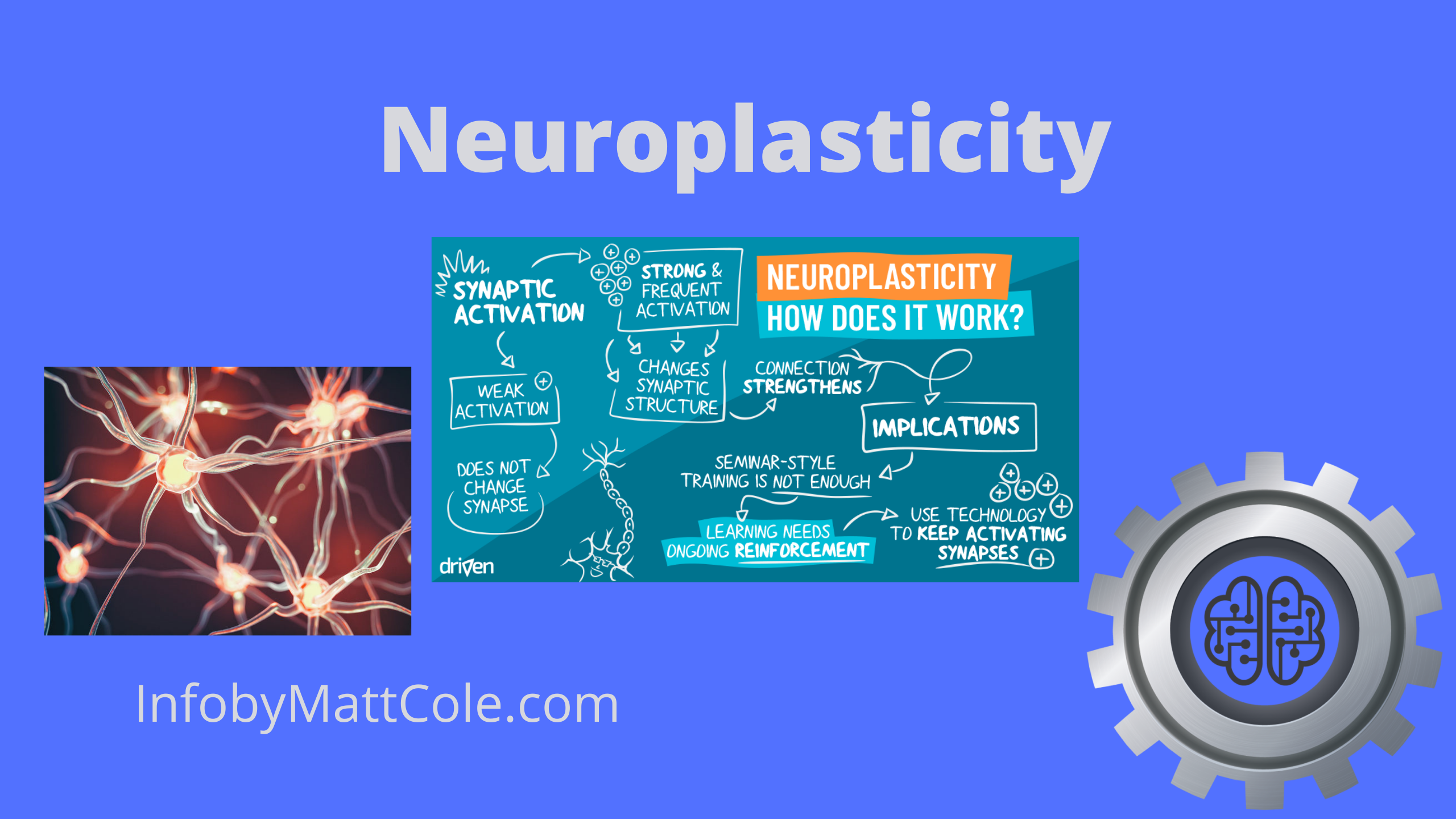Podcast: Neuroplasticity
In a scenario, we have two employees working in the same environment having identical skills. Each is adept with their unique tasks, performing well. After work employee one chooses to challenge himself mentally with new ideas and experiences while employee two, each evening chooses to only watch TV, giving little room for mental growth.
Suddenly, there is a drastic change in their work environment, and the old techniques, processes require being changed to adequately adapt to these needs.
On the surface employee, one appears to adapt and are able to pick up the new processes, with little struggle and having a small learning curve. In contrast, we see employee two struggling to adapt to the new environment.
It is soon acknowledged by other employees. employee one is the better worker and thriving. This is communicated with the managers and he is promoted.
How is it, employee one can compensate and adjust easier than the other? The answer lies in neuroplasticity.
Neuroplasticity is the ability of the brain to form and reorganize synaptic connections, especially in response to learning or experience or following an injury. An easier way to define neuroplasticity is the brain’s ability to reorganize itself or relearn.
This ability to relearn is the human body’s method to overcome inherent memories we have trained or made ourselves to believe. Working the same process every day, we metaphorically dig deep trenches in our minds, which we find difficult to get out of. However, if you have plasticity or malleability, you can find your way out of these deep mental trenches and relearn much easier.
Biologically, it is the ability for an organism to change in its environment between differing habitats for survival. Neurologically, it is your neuron’s (nerve cells) ability to compensate and adjust as a response to new situations and changes in the environment.
Years ago, when I was providing classes to homeschoolers, I would convey to them, the best skill you can acquire is the ability to “relearn.” I understood this necessity, due to the ever-changing and advancing technology environment. At the time I had not heard the proper term being neuroplasticity.
Historically, the father of neuroscience Santiago Ramon y Cajal is acknowledged to provide us understanding that our neurons are constantly forming new connections. Santiago a Spanish neuroscientist, pathologist, histologist, and visual artist brought us the “Beautiful Brain”, providing us the visual concept of our neurons forming these connections.
Fifty years later, Polish neuroscientist Jerzy Konorski became the first to use the term neuroplasticity. Jerzy, in his 1948 book titled “Conditioned Reflexes and Neuron Organization” described learning at a cellular level calling it synaptic plasticity or the change in the connection between neurons.
1960’s to the current through additional research, we now understand the ability with our neuronal connections ability to repurpose or reorganize after traumatic events. While this newfound understanding led the way to help patients retain the ability to relearn critical functions such as speech and motor movements, the same techniques can be used to help us keep our neuroplasticity malleable.
How does one attain healthy or better neuroplasticity?
It involves both mental challenges as well as healthier diets.
Mentally, select an activity that is new, challenging, and important to you. Commit yourself to engaging in this exercise as frequently as you can. Personally, my wife and I have been using an app to learn a new language. It gives us a challenge, while also being outside our normal work environment.
Outside learning a new language, other mental exercises can include memory games, learning to juggle or a new instrument, or challenging brain activities such as crosswords and sudoku. The purpose is to challenge one’s current mental state, moving outside comfort while making you mentally work.
Eating a healthy diet, while regularly exercising has always been the mantra. This and engaging or connecting with others helps neuroplasticity. Diet and exercise are a given, to assist your body maintainability for better health. Engaging and connecting with others provides additional benefits such as an increase in quality of health, strengthening your immunity system, increasing self-esteem, while lowering anxiety and depression.
Today, I challenge you to take these extra steps to better your neuroplasticity. It will not only provide a healthier lifestyle but increase your ability to adapt to these ever-changing environments.
You can find my Podcast on all the platforms above! Be sure to subscribe to Info By Matt Cole Podcast on your favorite platform!
Audio only version: Anchor Link https://anchor.fm/infobymattcole/episodes/Neuroplasticity-e1ecejk
Video version: YouTube Link https://youtu.be/f0K5r3oVpKM
Article version: Neuroplasticity: https://infobymattcole.com/index.php/2022/02/15/neuroplasticity/
#infobymattcole #podcast #learn #neuroplasticity #sudoku #mental #crossword
- Understanding Gain-of-Function Research: Implications of Trump’s 2025 Executive Order
- AI in Healthcare: Transforming Medicine with Benefits and Challenges
- AI in Education: Embracing the Inevitable with Ethical Implementation
- Laws of Priority
- DOGE Structure vs U.S. DOGE Service Temporary Organization



